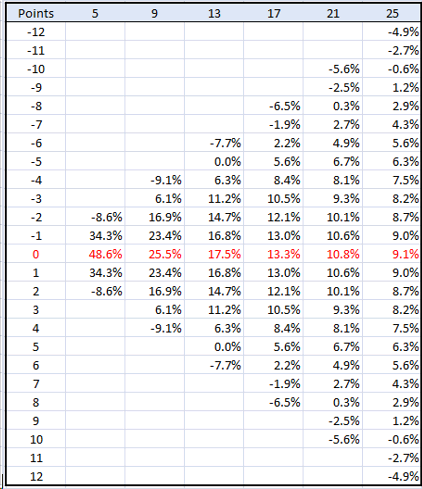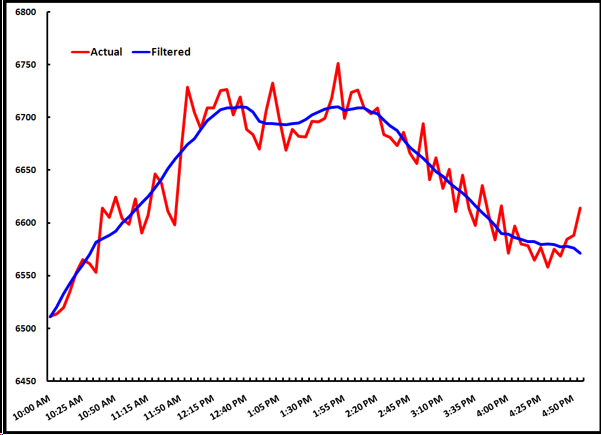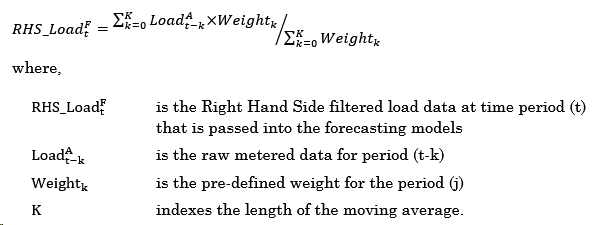Moving Average Method
The Smoothing or moving average method is applied in the "Smooth Forecast" Option, the Manage Cross Day Bias Set, and in the Manage TOU Parameter Sets. While each option pertains to a different series of data, the smoothing method used is consistent between the options.
The moving average method takes as input the length of the weighted centered moving average. The options are a 5, 9, 13, 17, 21, or 25 point weighted centered moving average. The number of lags/leads are measured in equal intervals back (i.e. 1, 2, 3,…,(n-1)/2) and forward (i.e. 1, 2, 3,…,(n-1)/2) with a maximum of 25 which would represent a two hour centered moving average. The exact calculation is presented below.

The weights assigned to each interval are pre-defined in MetrixIDR using the Savitsky-Golay algorithm. This algorithm performs a least squares fit a of a small set of consecutive data points to a polynomial and takes the calculated central point of the fitted polynomial curve as the new smoothed data point. The table below displays the weights for each method.
Sovitsky-Golay Weights

The figure below shows an example of data smoothed by the weighted centered moving average algorithm.
Examples of Weighted Centered Moving Average Filtering

Enable Lift Option
The Weighted Centered Smoothing requires an equal number of observations on either side of the data point being smoothed. This is the case for all but the most recent data values. For the most recent observations, there are no future values to include in the Weighted Centered Smoothing. As a result, only Right-Hand Side Smoothing is performed. During periods when the loads are ramping up Right-Hand Side Smoothing will lead to smoothed load values that are biased below the actual values. During periods when the loads are ramping down Right-Hand Side Smoothing will lead to smoothed load values that are biased above the actual values. To account for the inherent bias in Right-Hand Side Smoothing, the smoothed values are adjusted upward/downward using a set of Lift Factors. The calculations are described below.
Right Hand Side Smoothing. For the most recent observations the number of lags used is determined by the SG parameter set (i.e. 1, 2, 3,…,(n-1)/2). The number of leads however are set to 0. The exact calculation is presented below.

Lift Multipliers. To adjust for the Right-Hand Side bias Lift Multipliers are computed as follows:

Lift adjusted Smoothed data is then given by:
